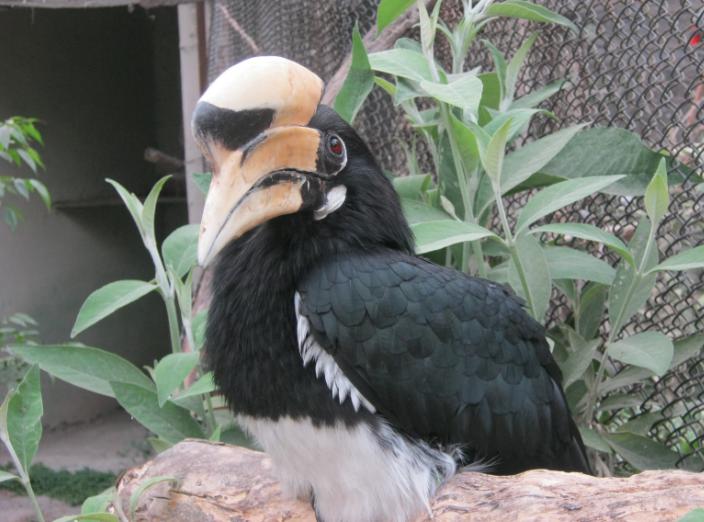Sushan Mani Shakya
The population of Hornbills in Nepal has been rapidly declining over the past few decades. The main factors contributing to this are hunting for their beak, meat and oil. Also, deforestation has largely constricted their habitat to few specific regions and reduced the number of trees with cavities where they exclusively nest. Although Hornbills are nationally endangered and protected, undocumented killing, by people with little knowledge of the seed dispersing and other ecological benefits, are on the rise. Loss of trees with nesting cavities is contributing to regional migration of Hornbills from Nepal to India. This project will contribute to strengthen knowledge of communities living in close proximity to these birds by directly involving them in conservation works as citizen scientists. They will be involved in erecting artificial nest cavities and collecting data for further research.

Oriental Pied Hornbill.
Hornbills are magnificent birds, long persecuted for their unique beak, the casque. Keeping the forests alive and thriving with their frugivorous feeding habit and seed dispersal, Hornbills nest only is tree cavities. The females enclose themselves inside tree cavities to lay eggs, incubate, hatch and care for their young. It’s the male’s duty to feed the females and the chicks from the outside the opening of the cavity.
This project will initiate conservation strategies and put forward young students of the community as citizen scientists to directly take part in saving hornbills and their natural habitats in eastern Tarai belt of Nepal. Multiple surveys will be carried out with the help of these citizen scientists and some surveys will be run entirely by the citizen scientists themselves. Artificial Nests will be installed and monitored alongside natural nests by the citizen scientists and they will also collect important scientific data. In situ conservation strategies will be implemented with heavy participation of stakeholders.